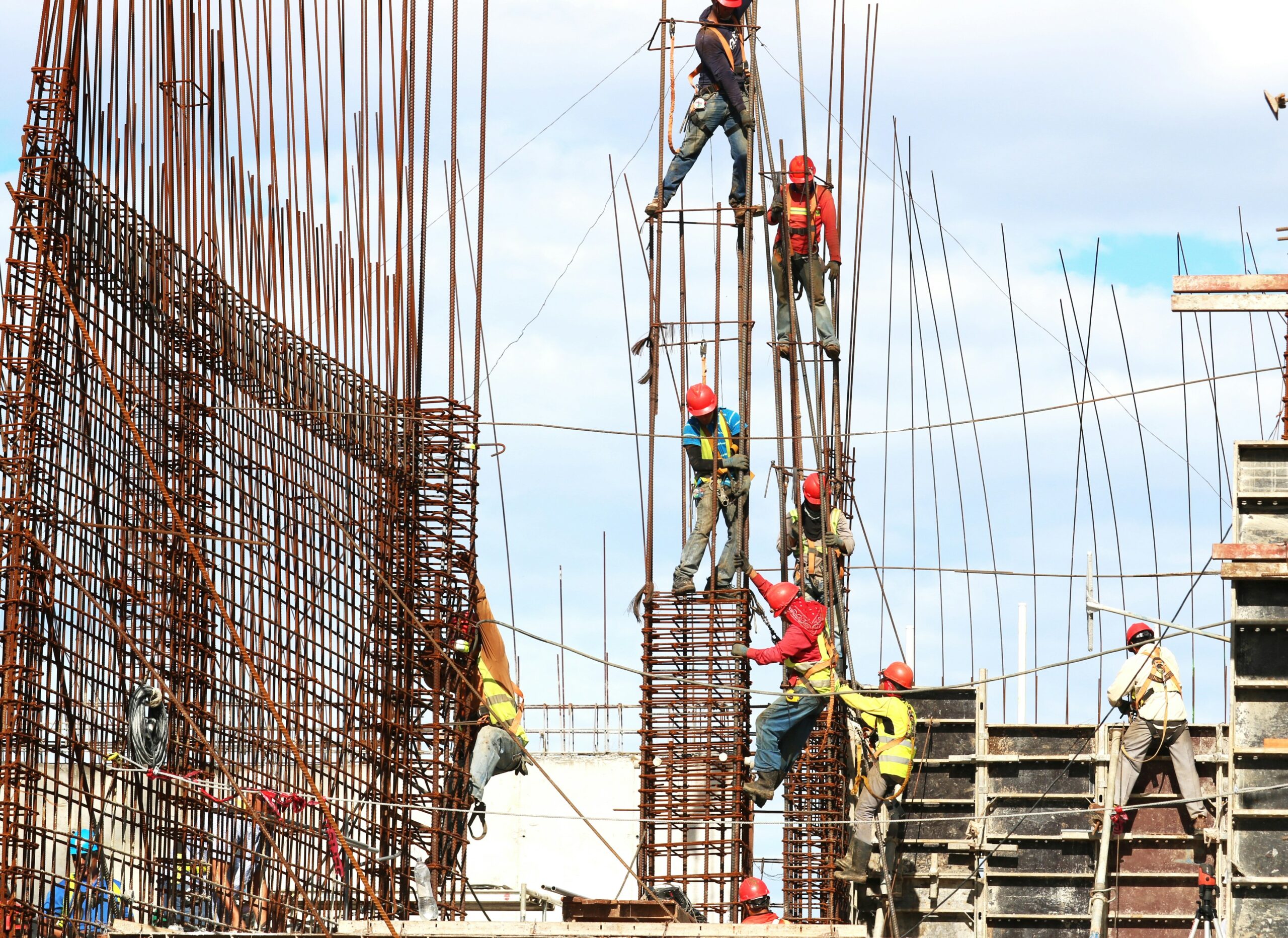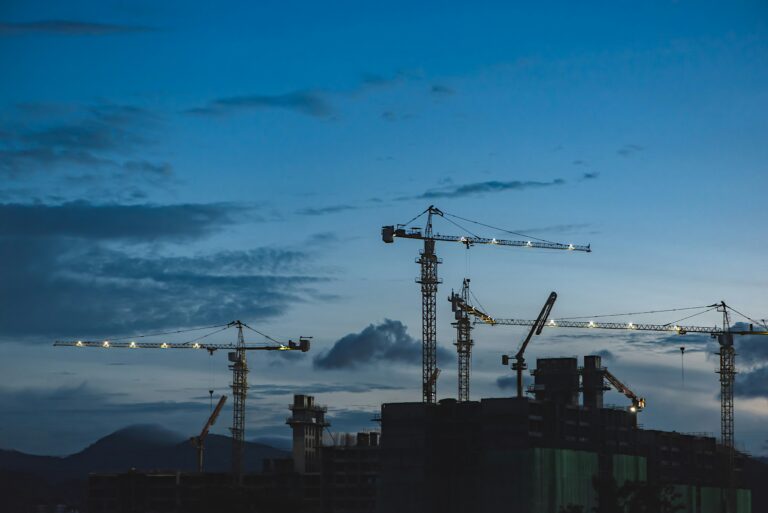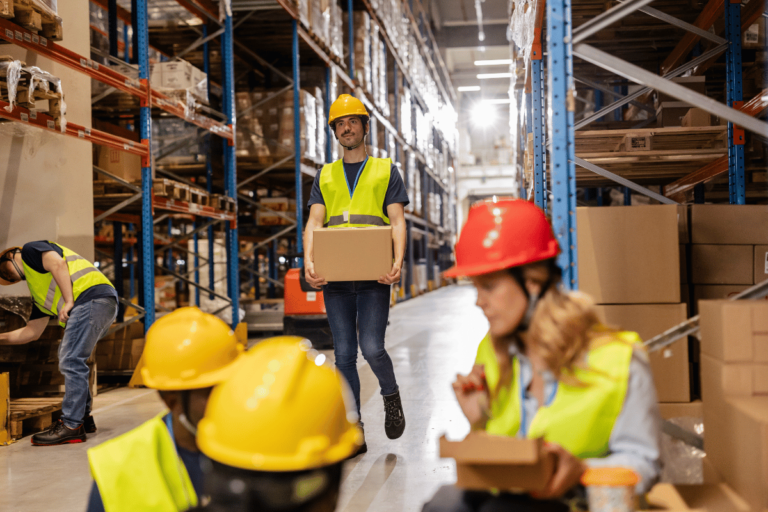Empower Your Crew: Streamlining Construction Safety Management
Construction Safety Guide
Keeping folks safe on construction sites is priority number one. Not only does it protect workers, but it also keeps the job running smoothly. Let’s break down the key points of construction safety, focusing on OSHA rules and why having solid safety policies is a game-changer.
What’s OSHA All About?
The Occupational Safety and Health Administration (OSHA) lays out the rules of the road for construction safety in Title 29 of the Code of Federal Regulations (CFR). These rules are the backbone for keeping everyone on construction sites safe and compliant. Think of them as your safety playbook.
These rules cover everything from fall protection to scaffolding to safety training. In the U.S., around 6.5 million people work on approximately 252,000 construction sites every day. It’s a risky business, and falls are the top cause of deaths each year, especially from ladders.
Knowing these OSHA standards inside out is like having a superpower—it helps you spot and fix problems before they become accidents.
| Common Hazards | Incidents Count |
|---|---|
| Falls | Leads in fatalities |
| Electrical issues | Often ignored |
| Hit by objects | Big risk in busy zones |
| Caught-in/between | Needs strict protocols |
Why Safety Policies Matter
Safety policies can’t just collect dust on a shelf—they need to be actively used every day. Regular safety audits, inspections, spotting hazards, and chatting with employees are crucial to make sure safety rules aren’t just known but followed (iReportSource).
A good safety management system gets everyone, from the top brass to the workers, involved. It promotes a shared sense of responsibility. Leaders in safety don’t just talk the talk; they walk the walk. They work to eliminate hazards, provide the right gear and resources, and lead by example (Cragin & Pike).
When you make safety policies a regular part of life on the job site, incidents go down. A construction safety checklist is a handy tool to make sure you’re ticking all the right boxes.
By basing construction safety practices on solid regulations and strong policy frameworks, you can create work environments that are safer for everyone. This not only boosts worker morale but also keeps productivity high.
Safety Management Programs
Safety might not be the most glamorous aspect of construction, but it’s the one that’ll keep everyone’s toes intact. Construction safety programs are your front-line heroes, stopping accidents and making safety second nature among workers. These programs get a supercharge when you mix in some multi-disciplinary magic, a pinch of behavior-based tweaks, and the crystal ball powers of leading indicators.
The Power of Many Minds Together
Think of multi-disciplinary involvement like a potluck dinner—everyone brings something different, but together, you get an epic feast. When different minds and skills meet, they uncover hazards and safety hacks you’d never find solo.
What does this look like in action?
- Talk the Talk: Get everyone yakking about safety.
- Listen Up: Use those chats to refine safety guidelines.
- Safety Is Everywhere: Make safety part of every project step.
When everyone pitches in, they’re more likely to stay alert to dangers and report issues. It makes safety not just a policy but a shared mission.
Change One Habit at a Time
Behavior-based safety isn’t about writing rules; it’s about changing what people do every day. Habits stick when you work on them daily and, like any good habit, they take a bit of time—think 66 days, give or take.
What makes this tick?
- Watch and Learn: Keep an eye on how employees handle safety.
- Say It Right: Give helpful pointers to get safety actions right.
- Keep the Good Vibes Rolling: Reward safe behaviors with high-fives or even an extra taco lunch.
When you make safety a part of the daily grind, it sticks and makes a noticeable difference.
Predicting the Future with Leading Indicators
Wishing you had a magic eight ball to prevent accidents? Leading indicators are close. These proactive metrics help you catch potential issues before they become real problems.
Here are a few to focus on:
| Leading Indicator | What’s It Tell You? |
|---|---|
| Training Sessions | How often is everyone drilled on safety? |
| Safety Audits | How’s the safety game looking on-site? |
| Worker Involvement | Are workers showing up for safety meetings? |
Using these insights, managers can tweak practices to plug holes before an accident sneaks up.
The Big “Management” Push
For any of this to work, management must walk the talk. They need to treat worker safety as sacred. When bosses show they care, workers feel more empowered to voice concerns and use safety resources freely.
Effective strategies include solid safety training programs and rock-solid safety checklists that turn theory into practice on the job site.
By taking a fun, collaborative, and seriously human approach to safety, these programs do more than checkboxes—they save lives. So, get your safety boots on and let’s keep those construction sites hazard-free!
Top Construction Hazards
Keeping construction sites safe starts with recognizing and addressing potential dangers. Here’s a breakdown of the most common risks and the steps to mitigate them.
High-Risk Activities
Construction work is pretty risky by nature. The following activities carry some of the highest risks:
| Hazard Activity | Description |
|---|---|
| Falls from Heights | Working on roofs, ladders, or scaffolding can be deadly. These incidents make up a huge share of workplace injuries, with ladder accidents being particularly serious. |
| Unguarded Machinery | Machinery without proper safety guards can cause severe injuries. |
| Heavy Equipment Accidents | Operating heavy machinery needs serious training, as misuse can lead to tragic outcomes. |
| Electrocutions | Working near electrical systems or power lines, especially without taking proper precautions, can be fatal. |
| Hazardous Material Exposure | Workers often face dangers from materials like silica dust and asbestos, which pose serious long-term health risks. Asbestos exposure alone results in about 5,000 deaths yearly in the UK. |
Ongoing Safety Initiatives
To keep these hazards at bay, construction companies roll out various safety measures. Here are some crucial initiatives:
- Construction Safety Training: Regular training helps workers recognize risks and follow safety protocols, cutting down on accidents (construction safety training).
- Personal Protective Equipment (PPE): Mandatory use of protective gear like hard hats and harnesses provides vital protection against injuries (construction safety equipment).
- Safety Checklists: A thorough construction safety checklist guarantees that all necessary safety measures are in place before and during work.
- Site Safety Tips: Promoting construction site safety tips fosters a safety-first culture where everyone watches out for each other.
By tackling the top risks head-on with proactive safety measures, construction workers can ensure a safer job site and dramatically cut down the chance of accidents.
Keeping Construction Sites Accident-Free
Safety first, folks! Making sure construction sites are safe shouldn’t feel like an impossible puzzle. Let’s break things down, focusing on spotting dangers and fixing them, because who doesn’t want to avoid unnecessary hassle?
Spotting and Squashing Hazards
Step one: figure out what’s waiting to trip you up.
- Discovering Risks: Take a look around and note what might go wrong. If it’s sketchy, it’s on the list.
- Choosing Fixes: Not every problem has the same solution. Pick the right fix for the problem.
- Planning: Write down what you found and how to avoid it.
- Making It Happen: Get those fixes in place, pronto.
- Double-Check: Make sure it’s all working and keep an eye on things.
Daily safety checks and open chatter about staying safe help keep everyone on their toes.
| Hazard | Usual Suspects | How to Dodge ‘Em |
|---|---|---|
| Falls | Slips and trips | Use guardrails and harnesses |
| Electric Shocks | Live wires and sparks | Follow lockout/tagout rules |
| Machinery Mishaps | Moving parts everywhere | Proper training and warnings |
| Heavy Lifting | Strain on muscles | Use tools, not just muscles |
Reporting and Reacting to Incidents
No news is not always good news. Proper incident reports and quick fixes save the day.
- Learn: Digging into what went wrong helps stop it from happening again.
- Analyze: Spot patterns and recurring issues through reports.
- Improve: Use the insights to beef up your safety measures.
Sharing info and making sure everyone knows their role in staying safe makes all the difference. Quick action plans for when things do go south should be second nature.
Looking for more tips to keep your site safe? Check out our safety gear guide, training modules, and everyday safety tips here. Let’s keep those hard hats where they belong – on safe heads, not on the ground.
Learning from Incidents
Why Incident Analysis Matters
Accidents happen, especially in construction. But we can avoid repeats by learning from each incident. A study of 210 construction workers in China revealed some critical factors that improve safety. Tops on the list? Sharing info and solid backing from management (NCBI).
Breaking down incidents needs a clear, methodical approach. Figure out what went wrong and why. When teams communicate well, safety standards rise.
| Key Factors in Incident Analysis | Impact on Safety Performance |
|---|---|
| Information Sharing | High |
| Management Support | High |
| Worker Involvement | Moderate |
Teaming up for reports and deep dives on accidents can seriously cut future mishaps. Companies that dive into incident analysis stay ahead, making safety a priority, not an afterthought.
Management’s Role in Safety Learning
Management isn’t just there to crunch numbers. They set the safety tone. Valuing incidents as golden learning moments and pushing for open chat about safety, without finger-pointing, is the way to go (NCBI). Leaders who prioritize safety set a precedent the entire crew tends to follow.
To shine in construction safety, management must actively spread the lessons from past incidents across all levels. When bosses walk the talk, incident rates drop.
| Management Moves | Benefits |
|---|---|
| Creating a Just Culture | Open reporting atmosphere |
| Setting Up Reporting Programs | Boosts incident awareness |
| Holding Training Sessions | Better safety skills |
In short, a workplace that values learning from accidents becomes a safer place. The managers’ role is vital in setting up and pushing for solid reporting, analysis, and info-sharing habits. Want more? Check out our pieces on construction safety training and construction safety gear.
Advancements in Safety Tech
The construction industry is always on the move, finding fresh ways to keep workers safer. Two game-changers in this area are wearable safety gadgets and sensor-based tech.
Wearable Safety Gear
Wearables in construction tackle tough problems like high accident rates, exhausting work, and fewer workers because of injuries (Asite). Here are some cool examples:
-
Exoskeletons: Think of a suit that makes lifting heavy stuff easier and safer. These help prevent muscle and bone issues and get more work done in less time (Asite).
-
Smart Helmets: These helmets are like your personal guardian, packed with IoT tech to keep an eye on dangers and reduce bumps and crashes on-site.
-
AR Glasses: Augmented reality glasses let workers see the project clearer which means better training and fewer mistakes.
| Wearable | What it Does |
|---|---|
| Exoskeletons | Prevents injuries and ups productivity |
| Smart Helmets | Lessens risk of collisions |
| AR Glasses | Boosts training and project understanding |
Sensor-based Tech
Sensors are now a must-have for keeping construction sites safe (NCBI). They give real-time updates so pros can watch over conditions and worker safety easily.
Some ways sensors help:
-
Environmental Sensors: These keep tabs on weather and air quality, spotting dangers that could put workers at risk.
-
Location Sensors: They track where everyone is on-site, making sure no one is lost in dangerous spots.
-
Smart Wearables with Sensors: Wearables often come with sensors to check vital signs, detect fatigue, and monitor movements, giving real-time alerts when something’s off.
| Sensor Type | How it Helps |
|---|---|
| Environmental Sensors | Watches air and weather conditions |
| Location Tracking | Keeps track of worker positions |
| Smart Wearables | Checks for fatigue and health signs |
Bringing in these new tech tools makes construction sites safer and shows workers that their well-being matters. Adding tech to safety routines can slash accident and injury rates. For more tips, check out our guides on construction safety gear, safety training, and site safety tips.







